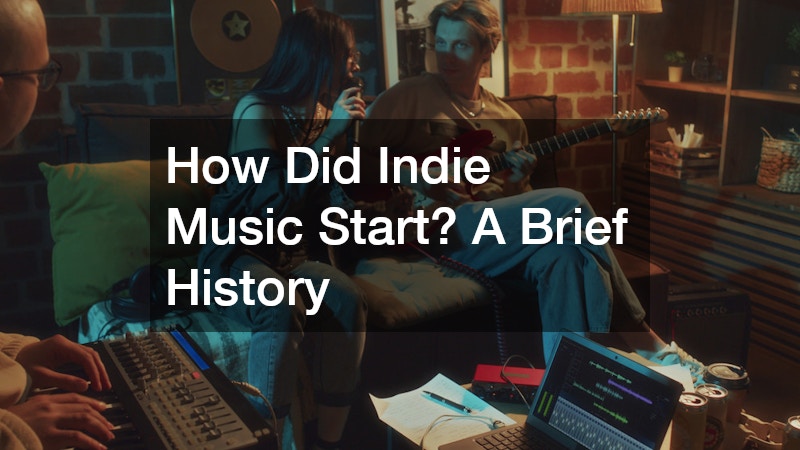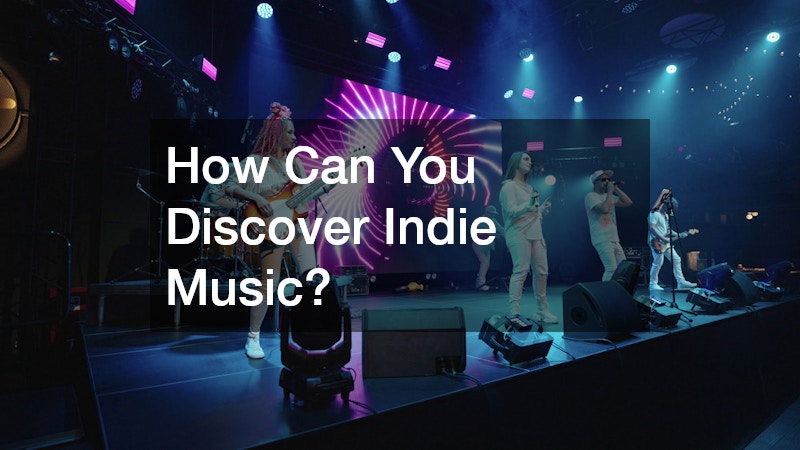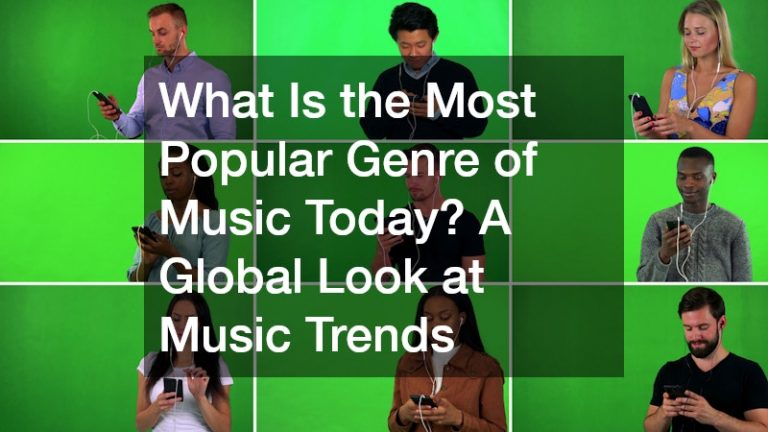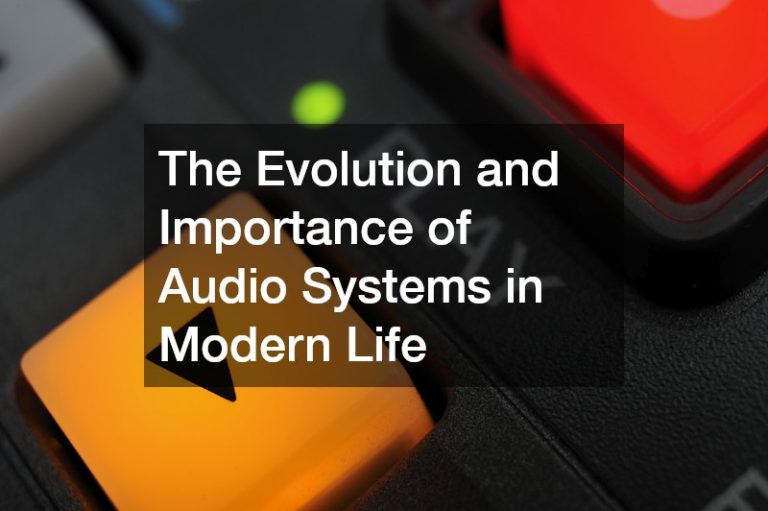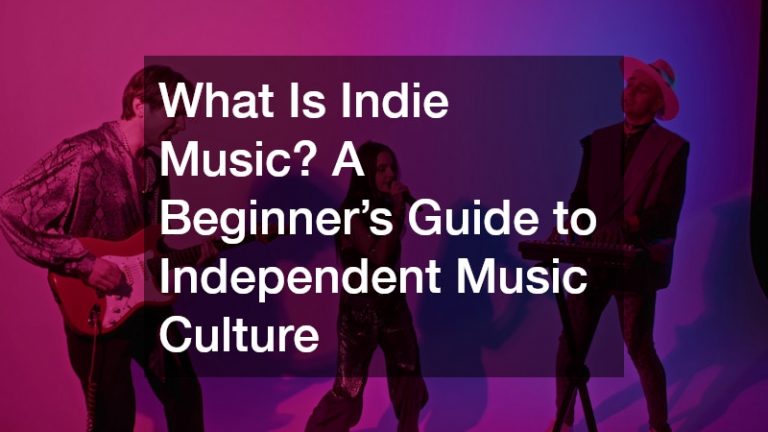

If you’re a music lover, chances are you’ve heard the term “indie music” tossed around frequently. But what exactly is indie music? Is it a genre, a style, or just a buzzword? For beginners curious about the indie scene, this guide will walk you through the roots, characteristics, and culture behind indie music.
From its origins to how it influences today’s music landscape, you’ll get a clear picture of what makes indie music unique and why it continues to attract passionate fans around the world.
What Is Indie Music? Defining Independent Music Culture
Indie music originally stood for “independent music,” referring to artists and bands who create and release their music independently from major record labels. Over time, “indie” has grown beyond just the business side of music production — it’s come to represent a distinctive sound and attitude, often characterized by a DIY (do-it-yourself) ethic, creative freedom, and authenticity.
Indie music spans various styles and genres, but it is united by the spirit of independence. Artists often produce their music with fewer resources than mainstream acts, focusing on artistic expression rather than commercial success. Indie music culture values originality, experimentation, and a close connection between artists and their fans.
How Did Indie Music Start? A Brief History
Understanding indie music means diving into its rich history. The indie movement began in the 1970s and 80s as a response to the dominance of big record companies. Punk rock and alternative bands played a crucial role in shaping the early indie scene by embracing independent record labels to maintain control over their music.
The 1990s saw the rise of iconic indie bands like Pavement, The Pixies, and Neutral Milk Hotel, who gained cult followings without major label backing. The internet era further democratized music distribution, allowing indie artists to reach global audiences through platforms like Bandcamp and SoundCloud.
Today, indie music continues to thrive as a vibrant, diverse scene with countless subgenres and dedicated communities.
What Are the Characteristics of Indie Music?
Indie music is not confined to one sound or style, but several common traits often appear:
- DIY Ethic: Many indie artists produce, record, and distribute their music independently.
- Creative Freedom: Indie musicians experiment with unconventional sounds and lyrics.
- Authenticity: Lyrics often focus on personal storytelling and emotional honesty.
- Lo-fi Production: Some indie music features intentionally raw or unpolished sound quality.
- Niche Appeal: Indie music often appeals to smaller, passionate audiences rather than mass markets.
Indie music can range from folk and rock to electronic and pop, making it a broad category that appeals to diverse musical tastes.
Why Do People Love Indie Music?
Music lovers are drawn to indie music for many reasons, from its authenticity to its sense of community. Here’s why indie music resonates with so many fans:
- Connection to Artists: Indie musicians often engage directly with their fans through social media and intimate live shows.
- Fresh and Unique Sounds: Because indie artists have fewer commercial constraints, they can explore new sounds and ideas.
- Discovering Hidden Gems: Fans enjoy the thrill of finding new, lesser-known artists before they become mainstream.
- Cultural Identity: Indie music often represents counterculture or alternative lifestyles, appealing to listeners seeking something different.
How Is Indie Music Different from Mainstream Music?
The difference between indie and mainstream music can sometimes be subtle, but there are clear distinctions:
| Aspect | Indie Music | Mainstream Music |
| Production | Independent or small labels | Major labels with big budgets |
| Sound | Experimental, varied | Polished, radio-friendly |
| Marketing | Grassroots, social media-based | Large-scale campaigns |
| Audience | Niche, dedicated fans | Broad, mass-market appeal |
| Artistic Control | Artists retain creative freedom | Labels often control direction |
Indie music often prioritizes art over commerce, which can result in music that feels more genuine and intimate to listeners.
What Is the Most Popular Genre of Music Today?
While indie music has a devoted following, many wonder: What is the most popular genre of music in the mainstream? Currently, genres like pop, hip-hop, and R&B dominate global charts and streaming platforms. These genres often feature high production values and appeal to wide audiences. However, the beauty of indie music lies in its contrast to mainstream trends, providing an alternative soundtrack for those seeking something fresh and different.
How Can You Discover Indie Music?
Getting into indie music can be an exciting journey. Here are some practical ways to start exploring:
- Streaming Playlists: Platforms like Spotify and Apple Music have curated indie playlists.
- Music Blogs and Websites: Follow indie music blogs that spotlight emerging artists.
- Bandcamp and SoundCloud: Explore these platforms to find unsigned and indie artists.
- Local Shows and Festivals: Attend indie music events in your area to experience the scene live.
- Social Media: Follow indie artists and communities on Instagram, Twitter, and TikTok.
Supporting indie artists by buying their music or merch directly can also make a huge difference in their careers.
What Is the Future of Indie Music?
Indie music continues to evolve with technology and changing listener habits. Streaming services have leveled the playing field, making it easier for indie artists to reach international audiences. Meanwhile, new genres and hybrid styles emerge constantly within the indie umbrella.
The future looks bright for indie music lovers who crave innovation and heartfelt expression. Whether you’re a longtime fan or a curious newcomer, indie music culture offers endless opportunities to discover meaningful and boundary-pushing music.
